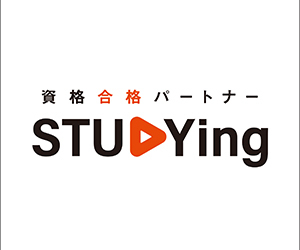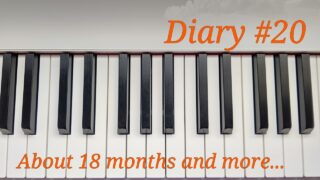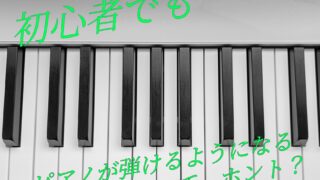第98回:強調構文:「it」と「what」を使った時の違い

強調構文の作り方や、どんなことに注目しているのかを確認してみましょう。
[広告]
確かな英語力は、日々の継続から。
その継続を後押しする、第二言語習得理論に基づいた
オンライン英語学習プログラムがあります。
英語を使う人のための、確実なスキルアップが望める
7日間の無料体験はこちらから!

“文を強調する: it-clausesとwhat-clausesの使い方”
英語では、文の特定の情報に焦点を当てるために、it-clausesとwhat-clausesを使用することがあります。これらは一種の強調構文と呼ばれることもあります。
セクション1: it-clausesを使った強調
- it-clausesにはbe動詞を伴って使用し、それに続く節が既知の情報や重要度が低い情報を含んでいます。
- 通常はthat-clauseと組み合わせて使用します。
セクション2: what-clausesを使った強調
- what-clausesにはbe動詞が続き、文の特定の情報に焦点を当てることができます。
- 特に会話ではよく使用されます。
セクション3: 特定の行動を強調するためのwhat + subject + do + be + to-infinitive clauseの形
- 特定の行動を強調する場合には、what + subject + do + be + to-infinitive clauseの形を使用します。
- it-clausesではこのような強調はできません。
セクション4: wh-clausesの他の形式
- wh-clauses(how、when、where、who、whyなどで始まるもの)を文の最初に置く代わりに、関連する意味を持つ名詞(例:reason、place)の後にthat-またはwh-clauseを続けることが一般的です。
具体例
Focusing with it-clauses:
- She always seemed so confident, but it was in public speaking that she struggled the most.
- We had a great time at the party, but it was the live music that made it truly memorable.
- I thought I had all the information, but it was the details in his report that I was missing.
Focusing with what-clauses:
- We had planned a beach picnic, but what we didn’t expect was the sudden rainstorm.
- She said she would help, but what she actually did was delegate the task to someone else.
- The presentation was supposed to be about the new project, but what I ended up talking about was the challenges we faced last year.
[広告]
TOEICのスコアを上げたいけれど、
まとまった勉強時間が取れなくて困っている…
なら、細かいスキマの時間を使いながら、
少しずつスキルを積み重ねてみてはどうでしょう。
スマホ1つでスコアアップが出来る、
オンライン講座のリンクはこちらから。

Q. この文法はどうやって使うのでしょうか?
A. 今回の文法を活用した会話文を見てみましょう。

Did you hear about the new employee in the marketing department?
(マーケティング部門の新しい社員のこと、聞いた?)

No, who is it?
(いや、誰が入ったの?)

Well, it’s not just any new employee. It’s Rachel, the marketing genius who launched that successful campaign last year.
(まあ、ただの新入社員じゃないんだ。去年あの成功したキャンペーンを立ち上げたマーケティングの天才、レイチェルだよ。)

Oh, I remember her! It was her creativity and strategic thinking that brought us such great results.
(ああ、思い出した!彼女の創造力と戦略的な考え方が、私たちに素晴らしい結果をもたらしたんだ。)

Exactly! And it’s because of her impressive track record that she was hired.
(そうなんだ!彼女の印象的な実績があるから、彼女が採用されたんだよ。)
[広告]
ロゼッタストーン・ラーニングセンターで、最先端の教育制度を活用して英語を学びませんか?私たちは個々の学習ペースに合わせてeラーニングと対面教育を組み合わせ、柔軟な学習環境を提供しています。自宅でのeラーニングと対面教育のメリットを最大限に活かし、あなたの英語学習をサポートします。最新のテクノロジーと個別の指導が組み合わさった当センターで、自由な学習スタイルを体験してみませんか?英語学習を楽しく効果的に進めるための環境がここにあります。新たな一歩を踏み出して、新しい英語学習の旅に参加しましょう!

Q. この記事の要点は?
A. 「it」と「what」を使った強調構文の確認でした。
- Focusing with it-clauses:
- An it-clause with “be” can be used to focus attention on information that follows.
- This is known as a cleft sentence.
- That-clauses are commonly used after the it-clause.
- Which or who can be used instead of that, while when or where are more informal options.
- How or why cannot replace that in this context.
- Focusing with what-clauses:
- A what-clause followed by “be” can also be used to focus attention.
- This is another form of cleft sentence.
- What we want to emphasize is placed outside the what-clause.
- It is often used to introduce a new topic, give a reason, instruction, explanation, or correct something.
- The what-clause can be placed at the beginning or end of the sentence.
- To focus on an action performed by someone, we use what + subject + do + be + to-infinitive clause.
- Use of related nouns instead of wh-clauses:
- Instead of placing other wh-clauses (how, when, where, who, why) at the beginning of the sentence, related nouns are preferred.
- These nouns are followed by that- or wh-clauses.
- Examples include reason, place, somebody, and time.
英会話を始めてみたいけれど、どのサービスが良いか分からない…
そんな方は、まず、この記事で3つのサービスを比べてみてはいかがでしょうか?
英語力を効率良く伸ばすことができるサービス3選です。

次回の文法解説は?
「倒置」の種類と、倒置する意味。
この記事を作る際に参考にした文法の解説書になります。
すべて英語で書かれていますが、練習問題が付いてます。
イギリス英語なので、スペル等の表記が異なる部分もありますが、
「使い方を練習したい」「繰り返し問題を解きたい」
という方は、使ってみても良いかもしれません。

関連記事一覧
他の文法解説記事を検索できます。



-320x180.jpg)
-320x180.jpg)

-320x180.jpg)
-1-320x180.jpg)
-320x180.jpg)




コメント